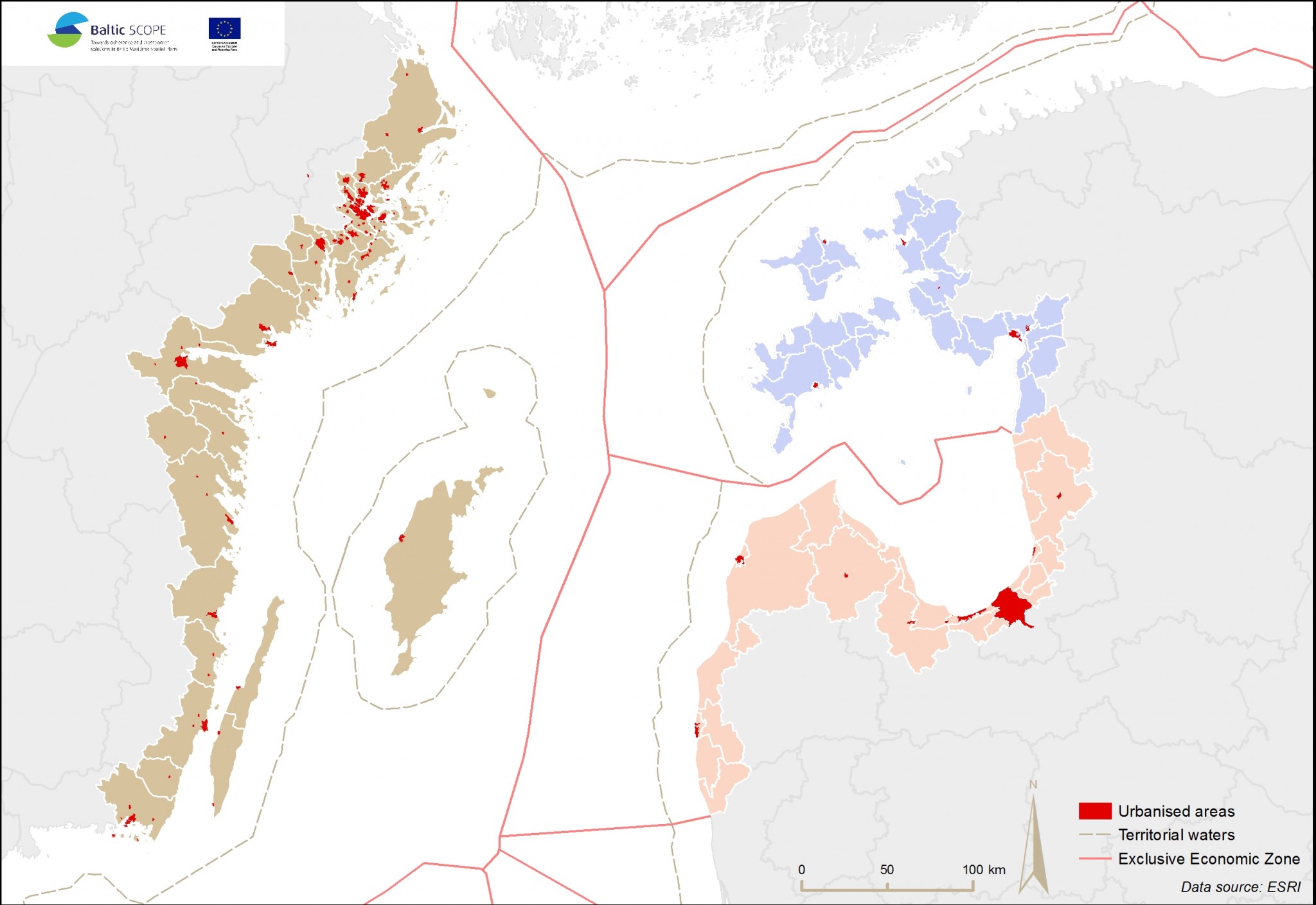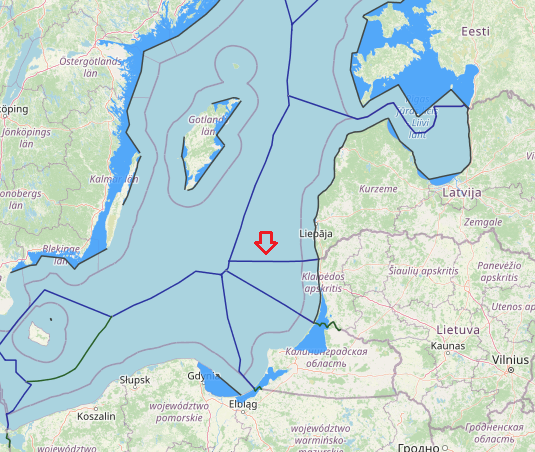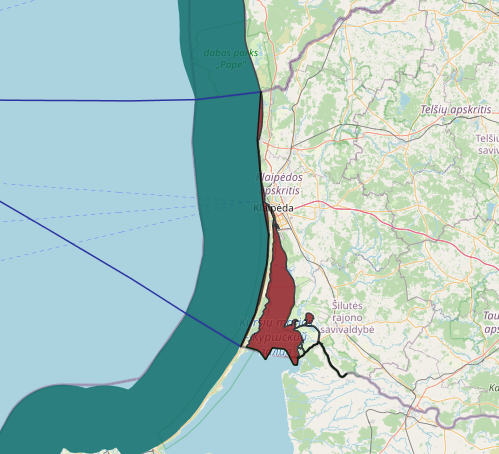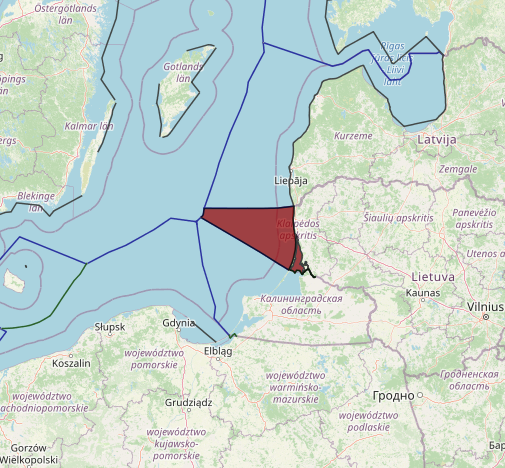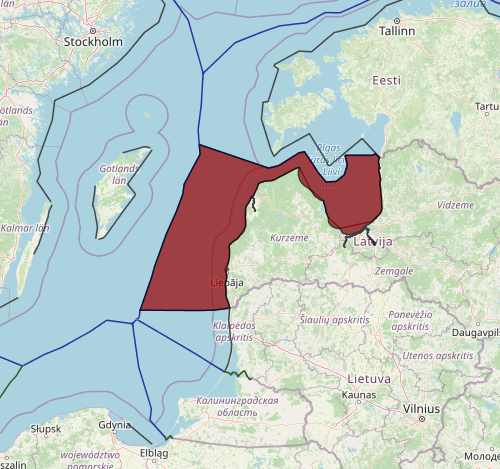All of Baltic maritime agreements, except the one between Latvia and Lithuania, have moreover entered into force by now. In 1999, Latvia and Lithuania concluded an agreement on the delimitation of the territorial sea, EEZ and continental shelf in the Baltic Sea. The agreement establishes a single maritime boundary, dividing the territorial sea, EEZ as well as the CS. The delimitation of the territorial sea was achieved through modified equidistance line. The azimuth which delimits the EEZ and CS represents the perpendicular to a line which the parties agreed to represent the general direction of their coast.
In the 1999 agreement between Latvia and Lithuania on the delimitation the territorial sea, EEZ and CS, the perpendicular line was also applied for the delimitation of the EEZ and CS. The parties agreed that this line represents the general direction of their coasts. Moreover, the latter seems to have been arrived at in such a manner that Lithuania secured an area of maximum reach, extending to Sweden’s EEZ, while at the same time taking into account Latvia’s interests in the non-living resources of the area.
Coastal configuration is not a decisive factor in the 1999 agreement between the Republic of Latvia and the Republic of Lithuania. The coasts of both States in the area being delimited are adjacent and rather smooth. In a symmetrical manner, the mainland coasts start out as concave in the area near the terminal point of the land boundary, but each appear in their entirety to be convex when viewed from a boarder perspective. The only special feature in the area is a promontory, which is not connected to the Lithuanian mainland and does not affect the delimitation line.
the Latvia-Lithuania Agreement is first of all an overall maritime boundary agreement, including the territorial sea, exclusive economic zone as well as the continental shelf. Secondly, it added English to the languages of the parties as an authentic text of the agreement. The latter is a rather new development in the Baltic Sea, which started to manifest itself after the dissolution of the former Soviet Union with respect to delimitation agreements directly related to this particular phenomenon. Up to the middle of the 1990s maritime delimitation agreements in this region had always been drafted in the respective languages of the parties only, these texts being equally authentic. Not one single exception to this rule existed. Since the middle of the 1990s this is already the fourth agreement which added English as a supplementary authentic text. What all of them, moreover, have in common is that in case problems of interpretation arise among the different authentic languages, the English language text shall prevail. No difficulty therefore arose when reproducing the English text in Annex 2.
On the other hand, what this agreement has in common with the Lithuania-Russia State Border Treaty, is that neither of them touches upon the question of the legal status of previously concluded maritime boundary agreements by the former Soviet Union in the areas to be delimited. Since Latvia and Lithuania strongly believe that they are not successor states of the former Soviet Union, but rather of the pre-World War II states bearing the same names, it is quite understandable that the preamble refers back to the “historical regulations on the delimitation of the territorial sea”. Based on an agreement of 1921, a boundary commission reached the conclusion in 1927 that the land boundary continued into the Baltic Sea dividing the territorial sea of both states, without however specifying the exact length of that line. It is thus important to note that this historical line was established by the parties themselves, and not by the former Soviet Union. It can therefore be concluded that the Latvia.. .Lithuania Agreement completely fits into the first of the two categories of maritime boundary agreements created by the dissolution of the former Soviet Union, as distinguished above.
This agreement was triggered by the presumed presence of non-living resources in the area to be delimited. Every action undertaken by Latvia in preparation of the exploration or the exploitation of these reserves, was countered by a Lithuanian reaction. This not only involved the sending of letters of protest, but also included recalling the Lithuanian ambassador in Riga for consultations at a particular moment in time. It is therefore understandable that a unity of deposits clause was inserted by the parties. Since the southeastern part is the most promising area of the Baltic Sea in terms of resource potential, such clauses have been the exception rather than the rule in that region as a whole.
the principle of equidistance, Beyond the territorial sea the line represents a perpendicular to what the parties accepted as representing the general direction of the coast. In doing so, Latvia seems to have secured most of the locations which were the subject of its negotiations with foreign oil companies. Lithuania nevertheless obtained a direct outlet to the middle of the Baltic Sea, a point that was already high on its agenda during its negotiations with Russia.
This agreement is at present still awaiting Latvian ratification. Even though fishery considerations had never been an issue during the negotiations, which lasted from 1993 until 1999, it is the Latvian fishing lobby which has been successful so far in blocking any parliamentarian action towards ratification. Latvian fishermen believe that the agreement will transfer the sovereignty of certain maritime areas, which belonged to Latvia prior to the Soviet era, to Lithuania. This places the present agreement in the very restricted group of Baltic Sea delimitation agreements which did not enter into force the year after signature.
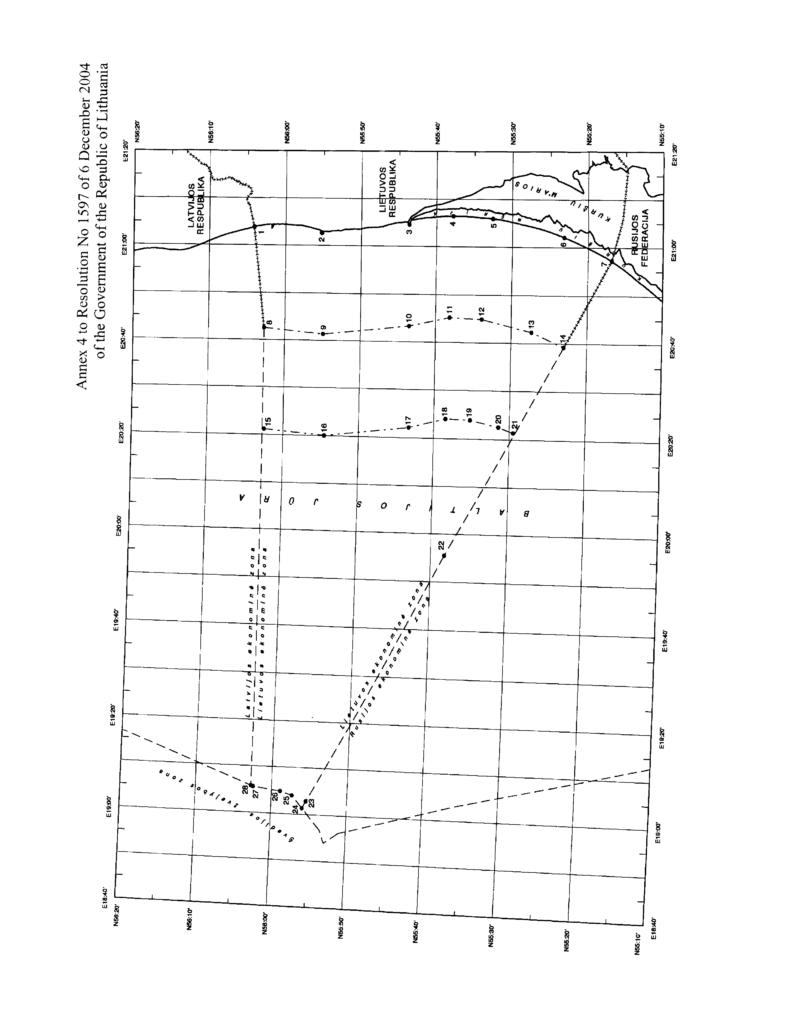
Annex 2
Agreement between the Republic of Lithuania and the Republic of Latvia on the Delimitation of the Territorial Sea. Exclusive Economic Zone and Continental Shelf in the Baltic Sea
The Republic of Lithuania and the Republic of Latvia hereinafter referred to as the Parties;
Desiring to establish the line delimiting the territorial sea, exclusive economic zone and continental shelf of the Republic of Lithuania and those of the Republic of Latvia in the Baltic Sea;
Recalling the Agreement between the Republic of Lithuania and the Republic of Latvia on the re-establishment of the State frontier of 29 June 1993as well as historical regulations on the delimitation of the territorial sea;
Acknowledging the provisions of the 1982United Nations Convention on the Law of the Sea and general principles of international law as the basis for this maritime delimitation;
Taking into account of all the existing rules applicable to the delimitation of maritime areas, with view to arriving at an equitable solution;
Have agreed as follows:
Article 1
The boundary between the territorial sea of the Republic of Lithuania and the territorial
sea of the Republic of Latvia shall be a straight line joining the points defined as follows
by means of their co-ordinates:
Latitude North
Point I
Point 11
50°04’08.90″
56°02’43.5″
Longitude East
21°03’51.47″
20°42’35.0″
Article 2
- The boundary between the exclusive economic zone and continental shelf of the
Republic of Lithuania and the exclusive economic zone and continental shelf of the
Republic of Latvia shall be a straight line (loxodrome) in the azimuth of 270 (two

